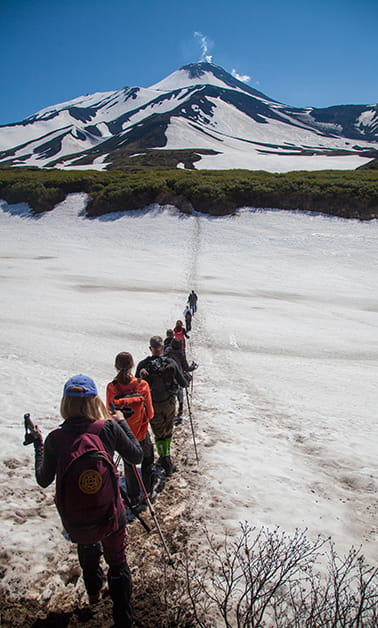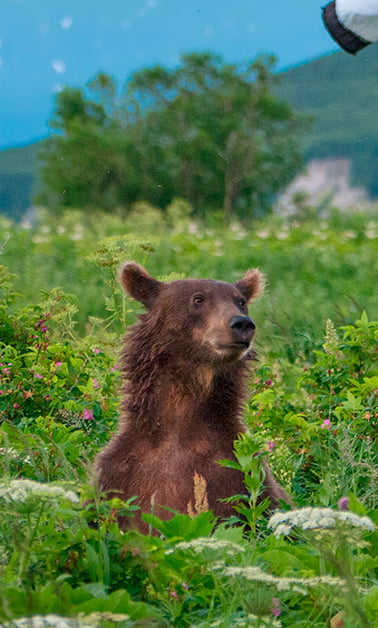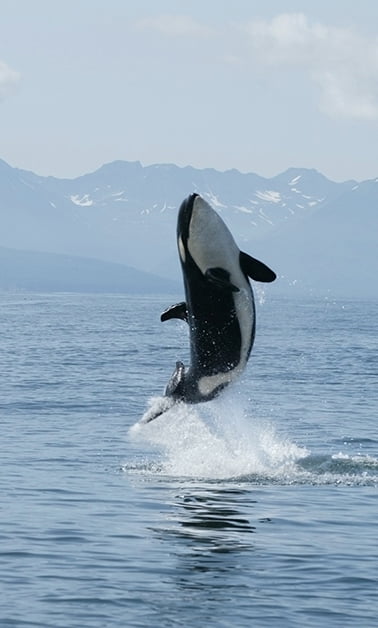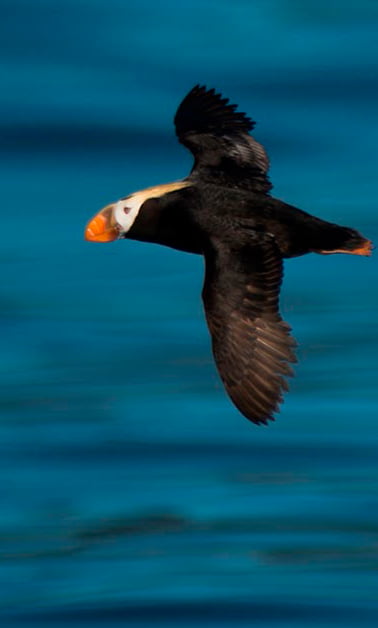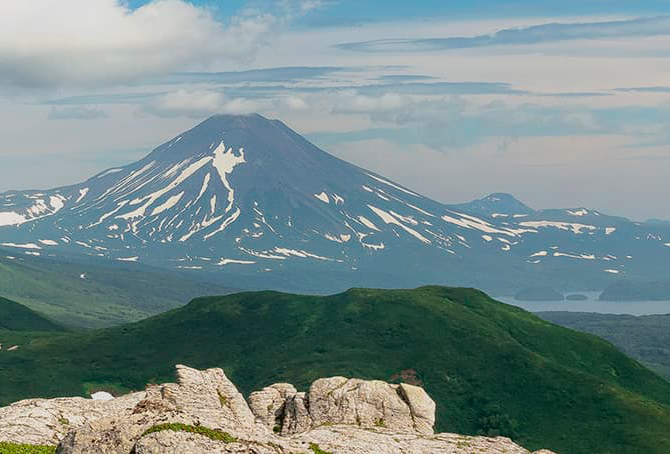
Avacha Bay
Avacha Bay hides an amazing and diverse natural world. Long before man came here, it was one of the richest ecosystems in Russia.
Avacha Bay in Kamchatka is one of the largest in the world. According to its characteristics, it can take any of the largest vessels. They even say that the entire merchant fleet of the world can find room in its open spaces. The total area of Avacha Bay, or gulf (as it is sometimes called), is 215 square kilometers. The surface of the water does not freeze in winter, which affects the climate of nearby settlements.
Avacha Bay has mostly steep shores. The rocks start usually from the very edge of the water but in some areas, you can walk along a sandy or pebbled beach. The length of the entire gulf is 24 km.
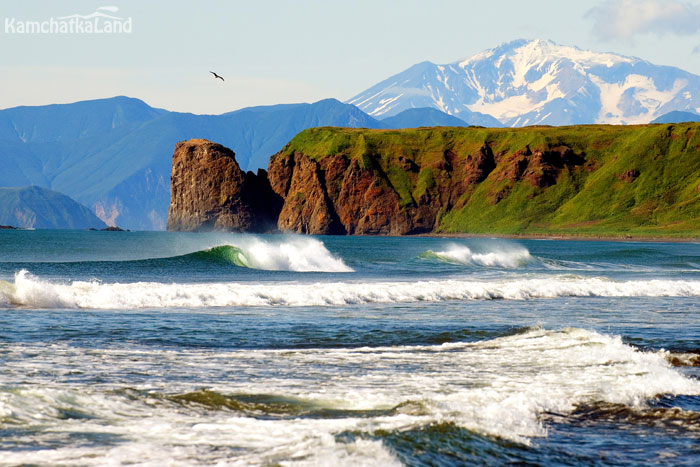
Location
Avacha Bay is located on the east coast of Kamchatka and is an internal part of Avacha Gulf. On the map, it is located in the southern part of the peninsula. The Avacha and Paratunka Rivers flow into it and on their banks, there are the cities of Vilyuchinsk and Petropavlovsk-Kamchatsky. The entrance to the bay is located between Capes Bezymianny and Mayachny. These original gates stretched for 3 kilometers. The gulf structure protects ships coming here from storms in the Pacific Ocean. The main port is located in the city of Petropavlovsk-Kamchatsky. It serves fishing and cargo vessels.
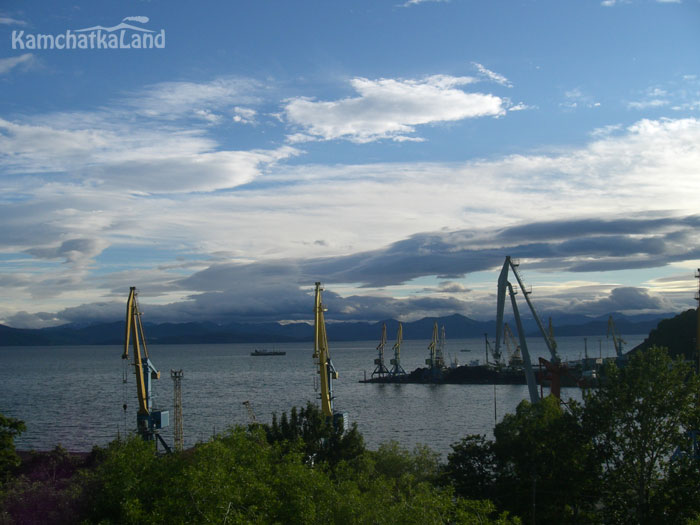
The main landmark
Located in the southwestern part of the entrance to Avacha Bay, Cape Stanitsky serves as the main navigation reference point when entering it. It received its name from Captain Fedor E. Stanitsky, former chief of Kamchatka in 1882-1928. On the map drawn up by Ivan F. Yelagin in 1740, the cape was called Kayumy, which means "rocks", "rocky cliff".
In 1954 on Cape Stanitsky, a lighthouse tower was put into operation, reaching a height of 8 m. Later, the same year, they put in service a sound-signaling appliance that warns sailors when they come to the stony ridge. After a couple of years, the light tower of night visibility began working. In 1959, after 5 years of operation, a strong earthquake destroyed the lighthouse. However, its restoration in 1961 was successful and in 1979, the first tests of the wind-diesel power station were carried out. By this time, a new night-vision light-optical appliance with a wider radius of visibility was mounted.
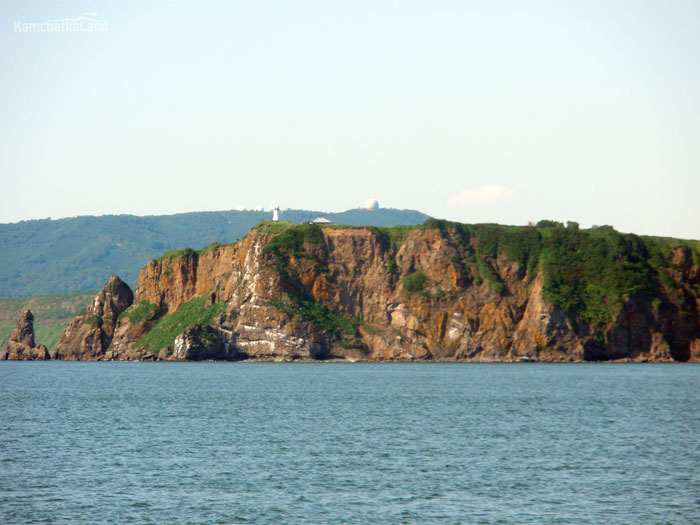
History of the Avacha Bay
The Russians opened Avacha Bay in 1703, just before the founding of St. Petersburg. Many famous travelers, circumnavigating the world, were amazed and praised the location of the bay, calling it the Kamchatka Pearl. Nikolay Muravyov, the former governor of Eastern Siberia, compared the ports of Russia and Europe, saying that there is nothing like Avacha Bay.
The name of the Bay has Itelmen roots, however, it has gained the modern name thanks to the largest river, which flows into it, — Avacha. Steller put forward the idea that the name Avacha comes from "Gshuabach" or, in another way, "Kshuchuapach", which means kshuchu (the gulf, the lake) and the apache (the father) from Itelmen.
The 90s of the 20th century were famous for shipping here. It was several times more intense than today. However, it is for the better because the bay has time to recover.
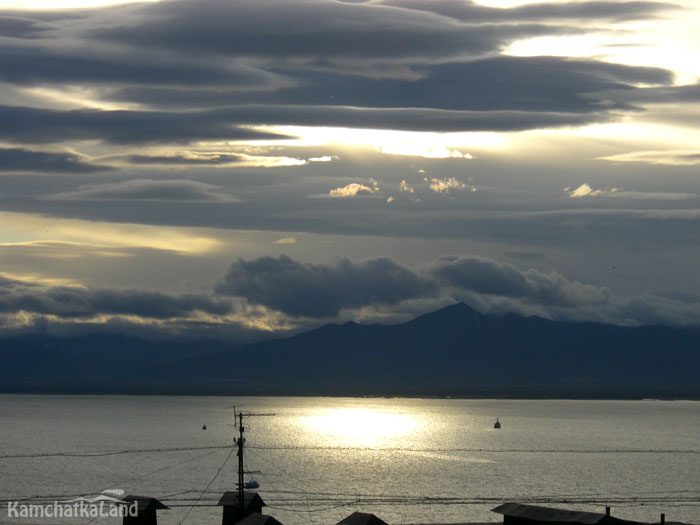
The depths and secrets
Ivan Yelagin was the first who make a map of the bay indicating the depths in 1740 at the direction of Vitus Bering. Today, Avacha Bay is used not only to receive vessels, for fishing but also as a place for diving. In some areas, its depth reaches 26 meters. At the end of summer, the water on the surface warms up to 15 degrees above Celsius, and at a depth of 10 meters to 7 degrees. The waters are cold and only the bravest bathe here. Visibility when diving depends on the location and season. In the lower layers, it can reach up to 8 meters. On the tidal maps, you can see that at certain daylight hours, the water level can rise above 3 meters, by the evening after 10 p.m., on the contrary, the water drops and the level drops just below zero.
At the bottom, there is a ship graveyard with about 74 submerged ships, which visit is relatively safe for divers. The total weight exceeds 250 thousand tons. Most of them previously belonged to the Navy. Such burials influence the pollution of Avacha Bay, therefore, the projects to cleanse the seabed from anthropogenic pollution are being considered.
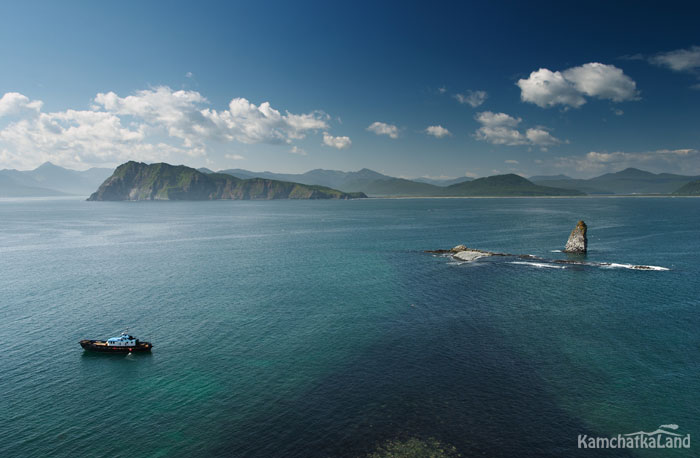
Flora and fauna
As for the animal and vegetal life, it is colorful and diverse. At the bottom, you can find a sea urchin, which caviar is a delicacy and can be eaten raw. Starfishes, jellyfish and sea cucumbers are quite common, as well. On rocky sites, there are anemones, various types of ascidians and sponges. In the thickets of brown algae, hairy crabs live, and in the spawning season, king crabs.
Bivalve mollusks, mussels, are widespread, and with a large accumulation, they grow together and form the so-called mussel banks. Avacha Bay is home to 32 species of fish. With luck, you can not only observe but also participate in underwater hunting.
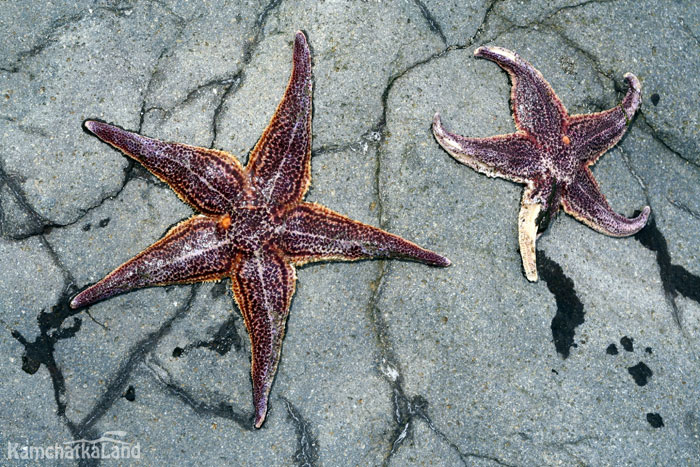
The fauna of Avacha Bay is no less diverse than the sea one. Seals and sea lions swim in its waters. You can often see them relaxing on separate islands. Some individuals gather during the winter season at a fish processing plant in the Mokhovaya district.
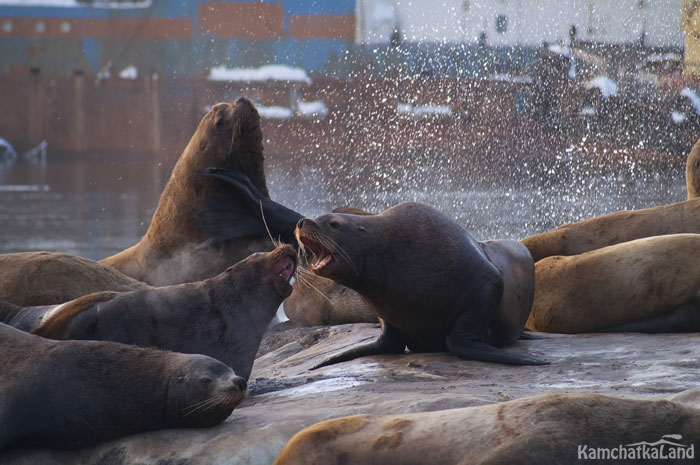
Killer whales live near the coast of the peninsula from time to time but they swim extremely rarely into the bay itself.
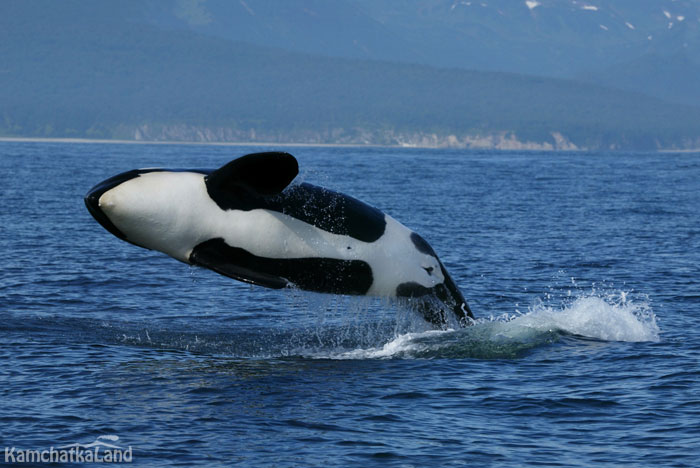
On the shores of Avacha Bay, numerous species of seabirds have found their home. On rocky shores and individual cliffs, they arrange colonies. To see all the variety of birds, you can go on an excursion to Starichkov Island. The island is protected and is a natural monument. Only scientists and environmentalists can land it. All guests ride around the island in inflatable motorboats.
When approaching the island, you can hear the shrill voices of 50 thousand birds. There are gulls, auklets, puffins, red-faced cormorants, tysties, urias, and many others. Various species of ducks come for wintering in the water area and adjacent wetlands. Among the large predators, the white-tailed eagle and the golden eagle stand out.
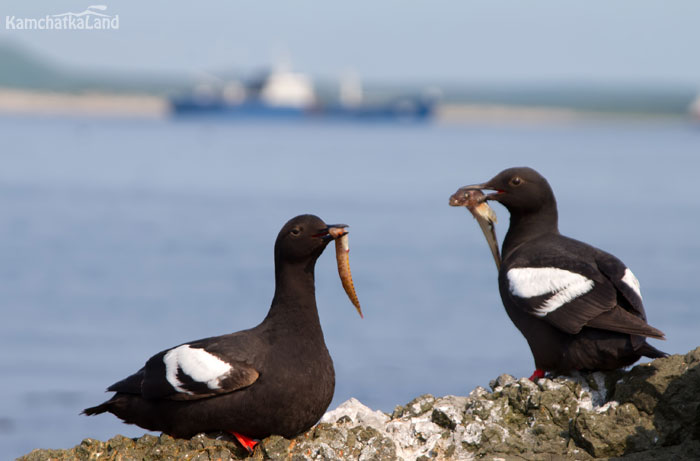
The unforgettable and bright world of Avacha Bay will touch everyone’s feelings. You can study it again and again, constantly finding out something new.
Sightseeing - what to see
Three Brothers in Avacha Bay
At the entrance to the bay, three closely spaced column-shaped rocks rise from the water. They are called "Three Brothers". You can find images of these kekurs on many postcards and photographs of Petropavlovsk-Kamchatsky. They are a symbol of the Bay and the city.
There is a legend that the gods got angry with the indigenous people of Kamchatka and sent huge ocean waves to wash off the coastal villages. However, the three brothers defended the settlements and repulsed the water onslaught. The gods turn them turned into stones and they now stand as eternal guards.
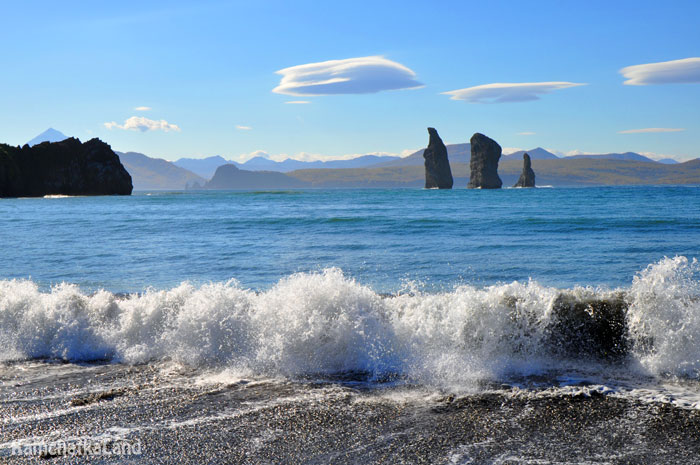
Avacha Gulf
The locals like to spend time walking along the embankment in the city center. If you want the most romantic walk, it is better to start from the Fleet Alley, and then climb Nikolskaya Sopka. On the way, you can visit the monuments to the defenders of Petropavlovsk-Kamchatsky. They were erected in honor of the soldiers who defended the city from the Anglo-French squadron during the Crimean War.
From the height of Nikolskaya Sopka, sometimes called Sopka of Love, there is a stunning view of the whole Avacha Bay. And if you came in the evening, you can observe how the sun sets over the horizon and leaves a red-orange path on the surface of the water. Before evening, you can descend to a small strip of pebble beach, which goes around the Sopka to the very center. Here you can have a rest and listen to the sound of the surf, advancing waves. The cries of seagulls occasionally disturb the peace. Walking along the embankment, you can find starfish, jellyfish, and seashells, thrown by the waves on the shore.
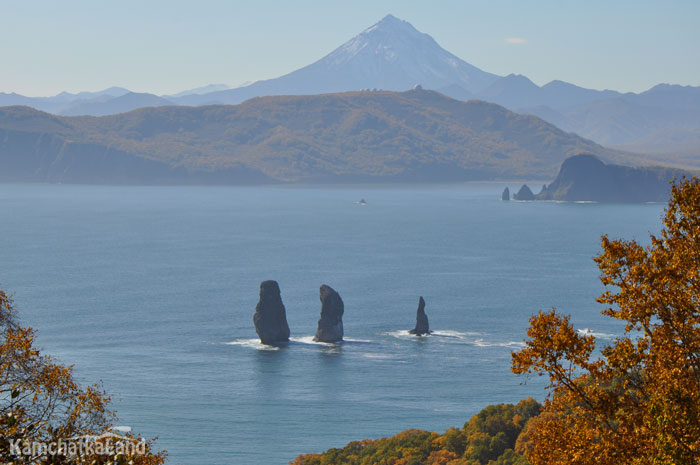
On the opposite bank of Avacha Bay from the city of Petropavlovsk-Kamchatsky, there is another port city — Vilyuchinsk. This is a closed military city. The military and their families are the main dwellers there. Vilyuchinsk is a strategic object of the Pacific Fleet of Russia. Nuclear submarines base here. In the background of the city, there is a Vilyuchinsky volcano.
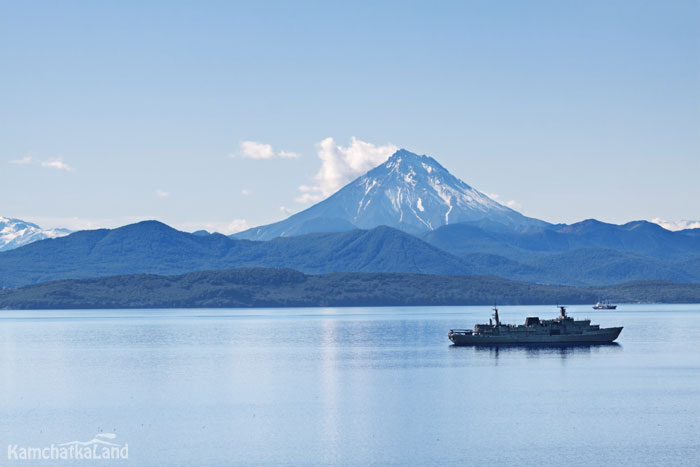
Seroglazka Bay
There are the bases of the largest fishing enterprises of the region. The bay itself is located on the northeast coast of Avacha Bay. According to legend, the bay received its name from a beautiful and loyal girl who was waiting for her lover on the shore.
Fishing in Avacha Bay and Rivers
Two large rivers, the Avacha and Paratunka, flow into Avacha Bay. During the period of spawning, a large number of salmon goes through the bay and further along the beds of these rivers. At this time, the water becomes dark and as if alive in some areas. You can come up and take a fish out of the water just with your hands.
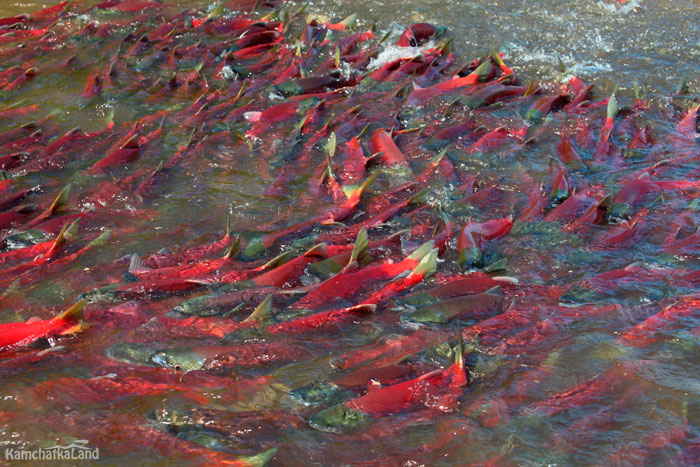
For the great fishing enthusiasts, Kamchatka offers ice fishing in winter. The history of this type of fishing goes back to the hereditary anglers, the Itelmens. Small smelt is the most common fish for ice fishing. The subspecies of the pond smelt prevail; however, it is possible to catch delta smelt, as well. Fishing on the first ice will be shallow. The line is lowered by 20 cm, and from the middle of winter, the fish goes closer to the bottom. In addition to the famous smelt, you can catch flounder, herring, and navaga.
All anglers must receive a license to catch, but there are also poachers, which are engaged in law enforcement. The only ones who do not worry about anything and feast with might and main are Kamchatka bears. During this time, they have to build up a sufficient amount of subcutaneous fat in order to hibernate in the winter. In some areas, such as the Kurile Lake, about 200 individuals of the brown bear gather for a feast during the fish-spawning season.
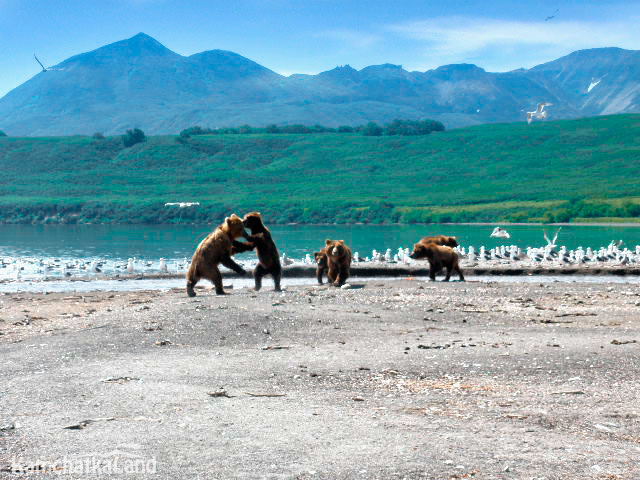
The climate of the Bay
The temperature in Avacha Bay in the hottest time, from July to September, reaches 10-15 degrees above Celsius on the surface, at a depth of 10 meters the thermometer drops to +6 0C, and in the deepest places, at a depth of 20 meters, it is only 3 degrees above Celsius.
The territory of the Bay is very extensive, but since it is separated from the ocean by an isthmus, there is a unique microclimate here. The hurricanes and storms of the Pacific Ocean are no longer felt here with such force.

How to get to Avacha Bay
First, you need to fly to the Kamchatka Peninsula. You can reach it only by air because the nearest railway is in Vladivostok, and passenger ships do not go here. The flight will take nine hours. Landing airport will be Yelizovo. Then you need to get to Petropavlovsk-Kamchatsky, located 30 km from the airport. You can reach it by city bus from the bus station. The exit to the Bay is located in the city center.
Popular tours with Kamchatkaland
Ready-made packages for your travel and vacation in Kamchatka

